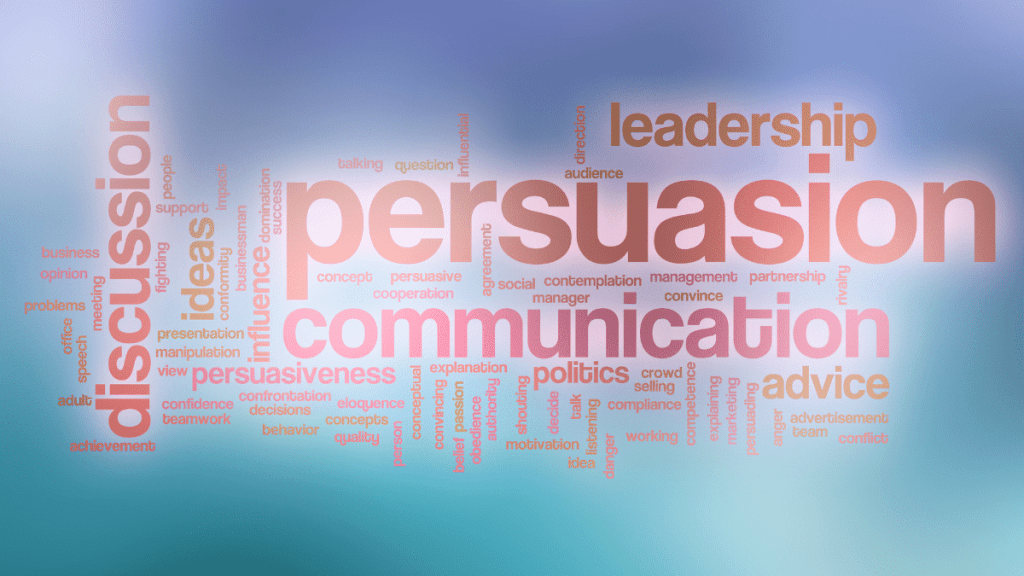Welcome to our blog post about the importance of logos, ethos, and pathos in persuasive communication. Whether you’re a marketer, a writer, or a student, understanding the power of these three elements can help you craft more compelling and effective messages. In this article, we’ll define each term and explore how they work together to create persuasive communication.
We’ll also provide examples of logos, ethos, and pathos in action and offer tips for incorporating them into your own writing. So, if you’re ready to take your persuasive communication skills to the next level, let’s dive in!
- The Importance of a Strong Introduction in Persuasive Communication
- What is Logos?
- Understanding Pathos: The Emotional Appeal in Persuasive Communication
- Understanding Ethos in Persuasive Communication
- Example of Logos, Ethos, and Pathos
- Using the Power of Conclusion in Persuasive Communication
- The Power of Ethos in Persuasive Communication
- Conclusion: The Power of Logos, Ethos, and Pathos in Persuasive Communication
The Importance of a Strong Introduction in Persuasive Communication
When it comes to persuasive communication, your introduction is everything. Just like a first impression, your introduction sets the tone for the rest of your message. It’s your chance to grab your audience’s attention and persuade them to keep reading. Think of your introduction like a fishing lure. You want to use the right bait to attract your audience and reel them in.
This means using powerful language and vivid descriptions to pique their interest and make them want to learn more. One effective way to do this is by using rhetorical questions. By posing a question that your audience can relate to, you engage them in your message and invite them to think critically about the topic at hand. Another strategy is to use analogies and metaphors to help your audience visualize your message. These comparisons can help make complex ideas more relatable and easier to understand.
Whether you’re using logos, ethos, or pathos to persuade your audience, a strong introduction is essential to your success. So take the time to craft an opening that grabs your readers’ attention, engages their emotions, and sets the stage for a persuasive message.
What is Logos?
Logos is a term used in rhetoric to refer to the use of logical arguments and evidence to persuade an audience. It is one of the three persuasive appeals, along with ethos and pathos, that are used to effectively communicate a message. Logos typically involves the use of facts, statistics, and logical reasoning to support a claim or argument. This can include citing research studies, providing examples, and using analogies or metaphors to help illustrate a point. One way to think about logos is to consider it as the foundation of a persuasive argument.
Without a strong logical basis, it is difficult to convince an audience to accept a particular point of view or take a desired action. For example, if you were trying to persuade someone to donate to a charity, you might use logos by presenting statistics on how the charity uses its funds to make a positive impact. You might also use analogies to help the audience understand the importance of their contribution, such as comparing the donation to planting a seed that will grow into a healthy plant.
Overall, logos is an important aspect of persuasive communication that can help to establish credibility and build trust with an audience. By using logical arguments and evidence to support a message, speakers and writers can effectively persuade others to take action or change their beliefs.
Understanding Pathos: The Emotional Appeal in Persuasive Communication
When it comes to persuasive communication, it’s not just about presenting facts and logic. Emotions play a crucial role in influencing people’s decisions and actions. This is where pathos comes in. Pathos is one of the three persuasive appeals, along with logos (logic) and ethos (credibility). It involves appealing to the audience’s emotions, fears, hopes, and desires.
Pathos aims to evoke feelings that will resonate with the audience and influence their decision-making. Using pathos in communication can be powerful, as humans are naturally emotional beings. When we feel emotionally connected to something, we are more likely to engage with it and take action. An effective way to use pathos is to tell stories or use analogies that the audience can relate to. For example, if you’re trying to persuade someone to donate to a charity, you could share a story of how that charity helped someone in need.
This can evoke feelings of empathy and generosity in the audience. Another way to use pathos is to appeal to the audience’s sense of identity or belonging. For instance, a political candidate may use slogans that appeal to people’s sense of patriotism or community pride. However, it’s important to use pathos ethically and not manipulate people’s emotions. The goal is to create an emotional connection with the audience, not to deceive or manipulate them.
In conclusion, pathos is a powerful tool in persuasive communication. By appealing to the audience’s emotions and desires, you can create a connection that will resonate with them and influence their decision-making.
Understanding Ethos in Persuasive Communication
Ethos is a rhetorical device used in persuasive communication that refers to the credibility or trustworthiness of the speaker or writer. It is an essential component of persuasive communication because it helps to establish the authority of the speaker, which is critical for the audience to accept the argument presented.
Think of ethos as the foundation upon which persuasive communication is built. It is like the concrete base of a building that provides stability and support. Without a solid ethos, a persuasive argument is likely to fall apart. To establish a strong ethos, the speaker or writer needs to demonstrate their expertise, experience, or credentials in the subject matter.
For example, a doctor discussing the benefits of a particular medication would have a stronger ethos than a layperson discussing the same topic. Additionally, ethos can be established through the use of language and tone. A speaker who uses confident, authoritative language and a professional tone is more likely to be perceived as credible than someone who speaks hesitantly or without conviction. Furthermore, ethos can be enhanced by the use of external sources such as statistics, quotes, or testimonials from reputable sources.
These sources can lend credibility to the argument being made and enhance the overall ethos of the speaker or writer. In conclusion, ethos is an essential component of persuasive communication that establishes the credibility and trustworthiness of the speaker or writer.
By demonstrating expertise, using confident language and tone, and utilizing external sources, speakers and writers can establish a strong ethos and create a persuasive argument that is more likely to be accepted by their audience.
Example of Logos, Ethos, and Pathos
Logos, ethos, and pathos are the three pillars of persuasive communication. Each element is crucial in convincing the audience to take action or believe in something. Here are some examples of how logos, ethos, and pathos are used in real-life scenarios:
Logos: A car advertisement that highlights its fuel efficiency and safety features is using logos to persuade the audience.The ad presents logical arguments with evidence and data to appeal to the audience’s rational thinking.
Ethos: A celebrity endorsement of a skincare product is an example of ethos. The audience trusts the celebrity’s authority and credibility, and therefore, they are more likely to believe in the product’s effectiveness.
Pathos: A charity advertisement that shows images of starving children in developing countries is using pathos to evoke emotions. The ad appeals to the audience’s empathy and compassion, encouraging them to donate to the cause.
Incorporating logos, ethos, and pathos in communication can help increase the effectiveness of the message. By appealing to the audience’s logic, credibility, and emotions, the speaker or writer can create a more compelling argument that resonates with the audience.
Using the Power of Conclusion in Persuasive Communication
When it comes to persuasive communication, the conclusion is a powerful tool that can make or break your argument. It’s the final thought that your audience will remember, so it’s essential to end your message on a strong note.
Think of your conclusion as the period at the end of a sentence. It marks the end of your argument and leaves a lasting impression on your audience. Just like a good period, a powerful conclusion should make a statement without being too forceful.
One effective way to craft a strong conclusion is by using rhetorical questions. These questions engage your audience and encourage them to think about the message you’ve presented. They also leave a lasting impression and can help drive your point home. Another technique is to use analogies or metaphors to make your message more relatable.
By comparing your argument to something your audience is familiar with, you can help them understand your point of view and make it more memorable. In conclusion, the power of conclusion in persuasive communication cannot be overstated. It’s the final opportunity to leave a lasting impression on your audience and make them take action. By using rhetorical questions, analogies, and metaphors, you can craft a strong conclusion that will help you achieve your goals.
The Power of Ethos in Persuasive Communication
When it comes to persuasive communication, using credibility and trustworthiness as a tool is the essence of ethos. Ethos pertains to your character, reputation, and expertise. It is the appeal to your audience’s sense of ethics, and it can make or break your persuasion efforts. Consider a doctor who endorses a weight loss pill.
The doctor’s reputation and expertise make the endorsement more credible to the audience. In this example, the doctor’s ethos is the reason for the increased believability of the endorsement. In persuasive communication, ethos can be built by establishing your credentials in the topic of discussion. Cite research or provide statistics that demonstrate your knowledge of the subject.
Use language that is appropriate for your audience, and avoid any fallacies that could undermine your credibility. Using ethos in your communication helps to establish trust and credibility with your audience. It creates a sense of authority, which can be a powerful tool in convincing people to take action. By establishing your character and reputation, you can build a relationship with your audience that will make them more receptive to your message. In conclusion, ethos is an essential element of persuasive communication.
By establishing your character, reputation, and expertise, you can build trust and credibility with your audience. This can create a sense of authority that can help you to persuade people to take action.
Conclusion: The Power of Logos, Ethos, and Pathos in Persuasive Communication
In conclusion, logos, ethos, and pathos are three integral components of persuasive communication that help speakers and writers connect with their audiences on an emotional and intellectual level.
By using logos, speakers and writers present logical arguments and evidence to support their claims, while ethos relies on establishing the speaker or writer’s credibility and trustworthiness.
Pathos, on the other hand, appeals to emotions and helps create a connection between the audience and the speaker/writer. Incorporating all three elements in communication can make the message more effective and engaging. For example, a speaker who uses logos to present a clear argument, ethos to establish their credibility, and pathos to evoke emotions is more likely to persuade their audience.
Overall, understanding and utilizing logos, ethos, and pathos can help individuals become more persuasive communicators, whether they’re trying to convince their boss to implement a new idea, persuade customers to buy a product, or inspire others to take action.












